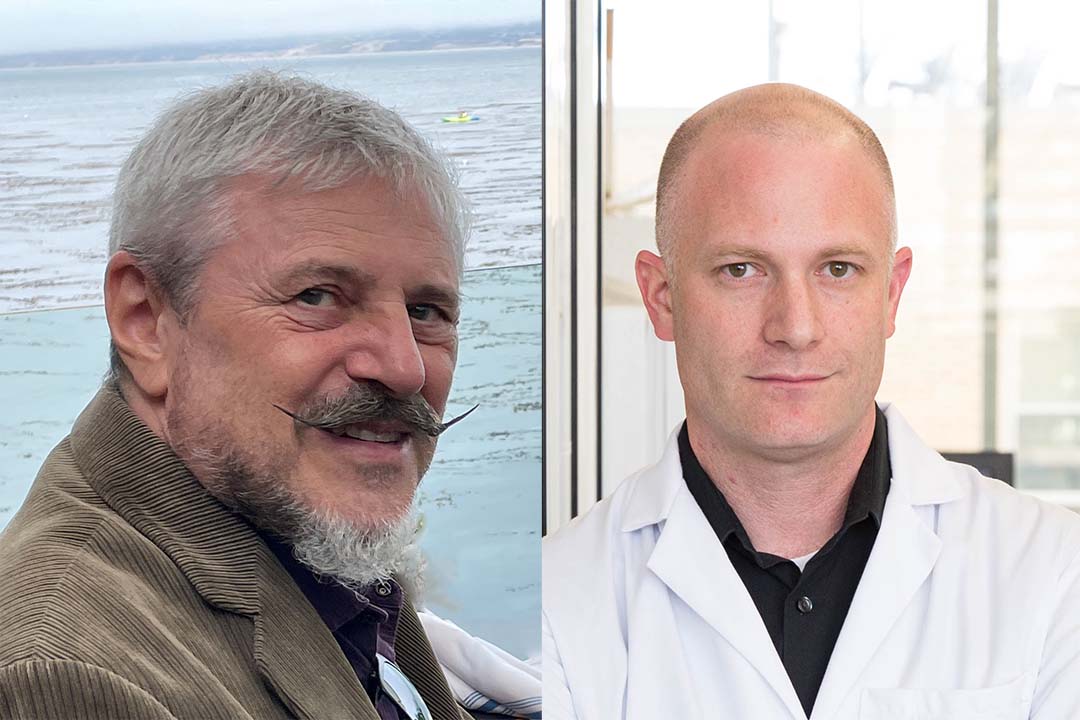Two members of the Columbian College of Arts and Sciences (CCAS) faculty were elected to the 2022 class of American Association for the Advancement of Science (AAAS) Fellows, a distinguished group of scientists, engineers and innovators recognized for their extraordinary achievements across disciplines.
Professor of Chemistry Akos Vertes, a co-inventor on 19 patents and lauded for his work in creating new analytical techniques for fields such as laser ionization and mass spectrometry, and Professor of Anthropology Chet Sherwood, whose research into the brains of primates and other mammals has shaped the study of evolutionary neuroscience, joined the distinguished class.
“This prestigious recognition reaffirms the important work we are doing to advance the boundaries of knowledge and understanding across the scientific spectrum,” said CCAS Paul Wahlbeck. “We are proud that our scientists are being recognized for their enormous contributions.”
Past CCAS faculty members receiving this lifetime honor include University Professor of Human Origins Bernard Wood, Professor of Physics Chair Chryssa Kouveliotou and, in 2021, Professor of Chemistry and International Affairs Christopher Cahill. GW President Mark S. Wrighton is also an AAAS electee.
Master Inventor
Vertes was recognized by AAAS “for distinguished and innovative contributions to the field of mass spectrometry, especially as applied to single-cell analyses.” One of his major accomplishments—a revolutionary ionization method called laser ablation electrospray ionization (LAESI), which quickly and effectively identifies a substance’s chemical composition from a limited amount of biological material—was ranked among the 100 most technologically significant products of the year by R&D Magazine, and named a top 10 innovation of 2011 by The Scientist. He also led a Defense Advanced Research Projects Agency project to develop a method to rapidly identify the root of biological and chemical threats.
Throughout his more than 30-year career, he has garnered major research grants totaling millions of dollars from agencies such as the National Science Foundation and the U.S. Department of Energy to support his work. Among his many accolades, Vertes is a fellow of the National Academy of Inventors, a recipient of the Oscar and Shoshana Trachtenberg Prize for Scholarship and a winner of the Chemical Society of Washington’s prestigious Hillebrand Award.
“When I arrived at GW 32 years ago, I was personally pulling Ethernet cables through the dropdown ceiling of my laboratory,” Vertes recalled. “Shedding blood, sweat and tears, and through the contributions of numerous talented associates, that laboratory went through major transformations to become one of the leading bioanalytical centers currently focused on single cell analysis. Being elected as an AAAS Fellow is a recognition of a modicum of success in this journey.”
Evolution Expert
Sherwood was honored, according to the AAAS citation, “for distinguished contributions to the field of biological anthropology and evolutionary neuroscience, particularly using comparative approaches to understand the evolution of the human brain.”
He is a part of the CCAS Center for the Advanced Study of Human Paleobiology and the GW Mind-Brain Institute. He also serves as a director of the National Chimpanzee Brain Resource, which facilitates research advancement through the collection and distribution of chimpanzee neuroimaging data and postmortem brain tissue. The project represents the largest consolidation of chimpanzee brain resources anywhere in the United States.
Sherwood has also been elected to the National Academy of Sciences, which recognizes scientists for their distinguished and continuing achievements in original research.
“I’m delighted to be named an AAAS fellow along with many distinguished scientists that I admire,” he said. “I value the recognition of the research I’ve been fortunate to do with so many talented students, postdoctoral scientists and wonderful collaborators throughout my career.”
A Prestigious Roster
This year’s AAAS roster of more than 500 scientists, engineers and innovators from around the world and across discipline includes pioneers in the Hubble Space Telescope mission, one of a handful of tenured Latina astronomy professors in the United States and leaders in analyzing epidemics and reducing the stigma of mental illness.
“AAAS is proud to elevate these standout individuals and recognize the many ways in which they’ve advanced scientific excellence, tackled complex societal challenges and pushed boundaries that will reap benefits for years to come,” said Sudip S. Parikh, AAAS chief executive officer and executive publisher of the Science journals.
The AAAS Fellows program stretches back to 1874. Fellows have included civil rights icon and sociologist W. E. B. Du Bois, astronaut Ellen Ochoa and Nobel Prize-winning physicist Steven Chu.


